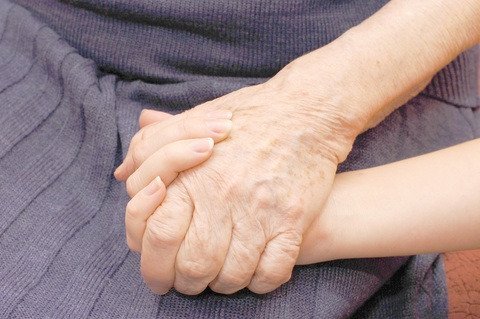Music Makes A Connection For Hospice Volunteers
Elaine is a hospice volunteer who regularly visits a patient at Green Hills Memory Care. She loves her time with Helen, who has dementia but isn’t terribly confused yet. It’s no trouble at all to get Helen talking about her childhood adventures and sharing stories about the many children and grandchildren smiling from the picture frames on her wall.
But now the volunteer coordinator has asked her if she would see another patient who lives at Green Hills, too. Elaine is willing – she has the time in her schedule – but she has to admit feeling a bit nervous about spending time with Judy. You see, Judy is much further down the path of Alzheimer’s Disease. She barely opens her eyes most days, and just lies in her bed or in her chair most of the time. She doesn’t ever talk, but Judy has seen her cry sometimes, and moan softly. Elaine knows that Judy must be lonely, but she’s not even sure that she notices when Elaine sits with her.
She wants to help, but she doesn’t know how.
One day, on a hunch, Elaine pulls out her phone and googles “Sinatra YouTube.” The first song to pop up is “Luck Be A Lady.” Elaine hits play, and keeps one eye on Judy as she listens to the song. At some point, she finds herself humming along. How can you help that anyway, with such a catchy tune? She reaches for Judy’s hand, and sees Judy open her eyes just a bit. She plays a few more Sinatra songs before leaving, finally feeling like she is doing some good.
Elaine tells the volunteer coordinator about her visit with Judy. She asks whether the hospice team knows anything more about the music that Judy likes. A few phone calls later and Elaine leaves for her next visit to Judy prepared with a boombox and a few CDs by artists Judy once loved. Elaine can’t wait to sit with Judy, hold her hand, and listen to these songs her family says she used to love.
Music Makes A Difference For Hospice Volunteers
How cool is it that music can bridge the vast dementia-caused cavern between two people? This story is fiction, but what happened here could happen for any hospice. In fact, I’ve heard from many hospice professionals and volunteers who have had these special connections with patients through music.
What’s even better, though, is that these musical connections could be routine. They could just be a normal part of what the hospice provides for their patients. All it takes is some proactive staff and advance planning.
What does your hospice do to support musical connections between volunteers and patients? Leave your wisdom in the comment section below.

